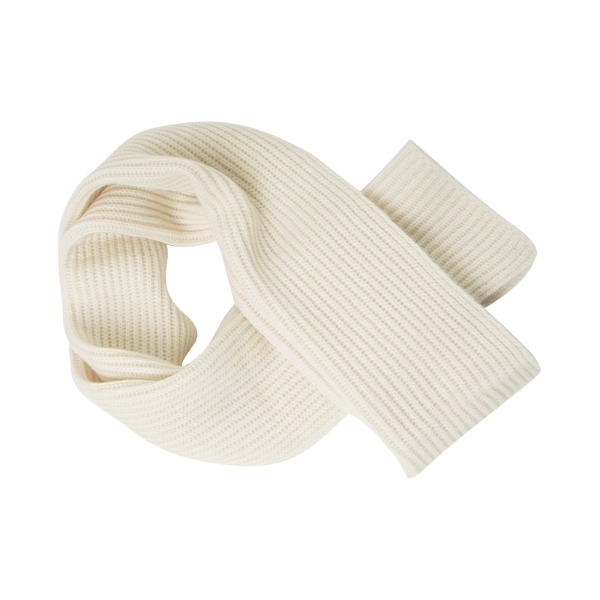Why Ribbed Knit Products Become Popular in Daily Apparel and Home Decor
With their unique fabric structure and versatile performance, ribbed knit products have gradually become a popular category in the fields of daily apparel and home decor. Their core advantage stems from the “elastic recovery” characteristic formed by the rib knitting process—through the interlaced weaving of loops, the fabric can quickly rebound after lateral stretching, fitting the body curve without causing tightness. For example, the rib design at cuffs and necklines can naturally fit the skin without restricting movement. At the same time, the subtle concave-convex texture formed by the rib structure not only enhances the tactile layering of the fabric but also improves breathability. Even when worn next to the skin, it keeps the skin dry and avoids stuffiness. In terms of application scenarios, ribbed knit products can cover both apparel (such as base layers, sweaters, and sweatpants) and home decor (such as pillowcases, sofa covers, and floor mats). Apparel products can optimize the fit through the rib structure, making clothes more fitted without being restrictive; home decor products, thanks to the softness and durability of ribbed fabrics, combine decorativeness and practicality. Whether for keeping warm in winter or staying breathable in summer, ribbed knit products can meet diverse needs, which is the key reason for their popularity among consumers.
Warmth Design and Application of Ribbed Knit Products in Baby Clothing
Babies have delicate skin and weak temperature regulation abilities, so the application of ribbed knit products in baby clothing must focus on warmth retention and safety. The warmth design first lies in the “heat-locking” feature of the rib structure: ribbed fabrics have a higher loop density, which can form a stable air layer inside the fabric, effectively blocking cold external air while retaining the heat emitted by the baby’s body. For instance, the necklines, cuffs, and foot openings of baby onesies adopt rib designs, which can fit the skin tightly and prevent cold wind from entering through gaps. Secondly, yarn selection is crucial—ribbed knit products for baby clothing mostly use blended yarns of cotton and wool (e.g., 70% cotton + 30% wool). Cotton fibers ensure skin-friendliness and softness, while wool fibers enhance warmth retention. Yarns with high chemical fiber content are avoided to prevent skin irritation. Attention should also be paid to detailed design during application: ribbed necklines are widened for easy dressing and undressing without strangling the baby’s neck; the ribbed waistbands of pants need moderate elasticity (20%-30% elongation), which can hold the pants in place without pressing the abdomen, ensuring the baby’s comfort during activities. In addition, all ribbed knit baby clothing must undergo strict softness testing and non-fluorescent agent detection to avoid rough fabrics or residual chemicals harming the baby’s skin.
Causes of Pilling in Ribbed Knit Products and Effective Care Methods
Pilling is a common issue in ribbed knit products, and its causes are closely related to fabric material, wearing habits, and care methods. From the perspective of causes, yarn material is the core factor: ribbed knit products with high chemical fiber content (such as pure polyester rib fabrics) are more prone to pilling than those made of natural fibers. This is because chemical fibers have poor wear resistance, and the ends of the fibers are easily broken and tangled into pills after long-term friction. Frequent friction with other rough fabrics (such as denim or backpack straps) during wearing also accelerates fiber breakage and leads to pilling. Moreover, violent rubbing during washing or high-temperature drying damages the loop structure of ribbed fabrics, making fibers more likely to fall off and form pills. Effective care methods need to cover washing, drying, and wearing: use neutral detergent for washing, control the water temperature below 30℃, select the gentle cycle, and avoid mixing with other rough clothes; after washing, avoid wringing, gently squeeze out water instead, and dry flat (avoid hanging to prevent fabric stretching and deformation) without exposing to direct sunlight to prevent fiber aging and brittleness; during wearing, minimize friction with rough objects. If slight pilling occurs, use a dedicated lint remover (with a round-tip blade) to trim gently, avoiding tearing by hand which further damages the fibers and extends the product’s service life.
Analysis of Wearing Experience Differences Between Ribbed Knit Products and Plain Knit Products
The structural differences between ribbed knit products and plain knit products directly lead to significant differences in their wearing experiences. In terms of elasticity and fit, the lateral elasticity of ribbed knit products is far superior to that of plain knit products. For example, a ribbed knit base layer and a plain knit base layer of the same size— the ribbed style fits the body curve better and has no sense of restraint during movement, making it suitable as innerwear; plain knit products have weak elasticity and tend to become loose when worn, making them more suitable as outerwear. In terms of touch and breathability, the concave-convex texture of ribbed knit products gives the fabric a more elastic and layered touch, and the gaps between the textures enhance air circulation, making it more breathable for summer wear; plain knit products have a smooth surface, are soft to the touch but slightly less breathable, making them more suitable for spring and autumn. In terms of durability and shape retention, the loop structure of ribbed knit products is more stable and less likely to deform after long-term wearing. For example, the waistband of ribbed knit jeans can still maintain elasticity after multiple washes; plain knit products are prone to stretching deformation, especially at the neckline and cuffs, which tend to loosen after long-term wearing. Additionally, ribbed knit products have a more obvious slimming effect and can optimize body lines, while plain knit products lean more towards a loose and casual style, allowing consumers to choose based on wearing needs and scenarios.
Production Tips and Application Scenarios of Ribbed Knit Products in Home Decor
With their soft texture and decorativeness, ribbed knit products are ideal materials for home decor, and mastering correct production tips can enhance the decorative effect. When making ribbed knit pillowcases, determine the fabric size based on the pillow insert size (usually 2-3cm larger than the insert to reserve sewing allowance), select medium-thick rib fabric (e.g., 3cm rib spacing), and use an overlock stitch during sewing to prevent the fabric edges from fraying; to add a design touch, splice rib fabrics of different colors on the pillowcase surface or sew tassels on the edges to enhance decorativeness. When making ribbed knit floor mats, choose high-density rib fabric (loop density ≥20 stitches per inch) to ensure the mat is wear-resistant and non-deformable. After cutting, sew anti-slip strips (such as rubber anti-slip pads) on the edges to prevent the mat from shifting; the size of the mat should be determined according to the application scenario—for example, a 40cm×60cm mat for the entrance and an 80cm×100cm mat for under the living room coffee table. In terms of application scenarios, ribbed knit pillows can be placed on sofas and bedroom headboards, and their soft texture enhances sitting and lying comfort; ribbed knit sofa covers are suitable for covering fabric sofas, which can protect the sofa fabric and add a sense of layering to the space through the rib texture; ribbed knit tapestries can be hung on living room walls—choosing dark-colored rib fabrics with simple patterns can add a warm atmosphere to the space, and the moderate drape of rib fabrics prevents wrinkles.
Performance Characteristics of Different Yarn Materials for Ribbed Knit Products and Selection Suggestions
The performance of ribbed knit products is closely related to yarn materials. Products made of different materials are suitable for different scenarios, and selection should be based on comprehensive consideration of usage needs. Cotton ribbed knit products are the most common type—cotton fibers have excellent skin-friendliness and breathability, are soft and comfortable to wear, and are not easily deformed after washing, making them suitable for making innerwear (such as base layers and underwear) and baby clothing. However, pure cotton rib products have weak warmth retention and need to be paired with other fabrics for winter use. Wool ribbed knit products have excellent warmth retention—the crimped structure of wool fibers can store more air, resulting in a significant heat-locking effect, making them suitable for making winter apparel (such as sweaters and scarves) and home blankets. However, wool products are prone to shrinking, so special wool detergent must be used for washing, and they should be dried flat. Chemical fiber (such as polyester and acrylic) ribbed knit products have strong wear resistance and elastic recovery, are not easily pilled, and are easy to care for, making them suitable for making sportswear (such as sweatpants and yoga clothes) and outdoor home products (such as balcony floor mats). However, chemical fiber products have poor breathability and may cause stuffiness when worn next to the skin. It is recommended to choose blended products of chemical fibers and natural fibers (e.g., 50% cotton + 50% polyester) to balance breathability and durability. In addition, bamboo fiber ribbed knit products have natural antibacterial properties and moisture absorption, making them suitable for making summer apparel and towel-like home products. However, bamboo fiber fabrics have low strength, so avoid vigorous rubbing during washing to prevent fabric damage.


 English
English Español
Español






